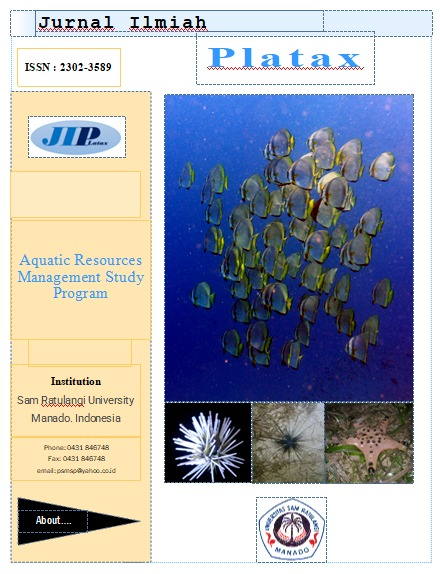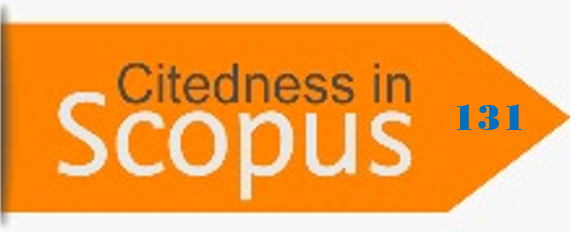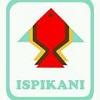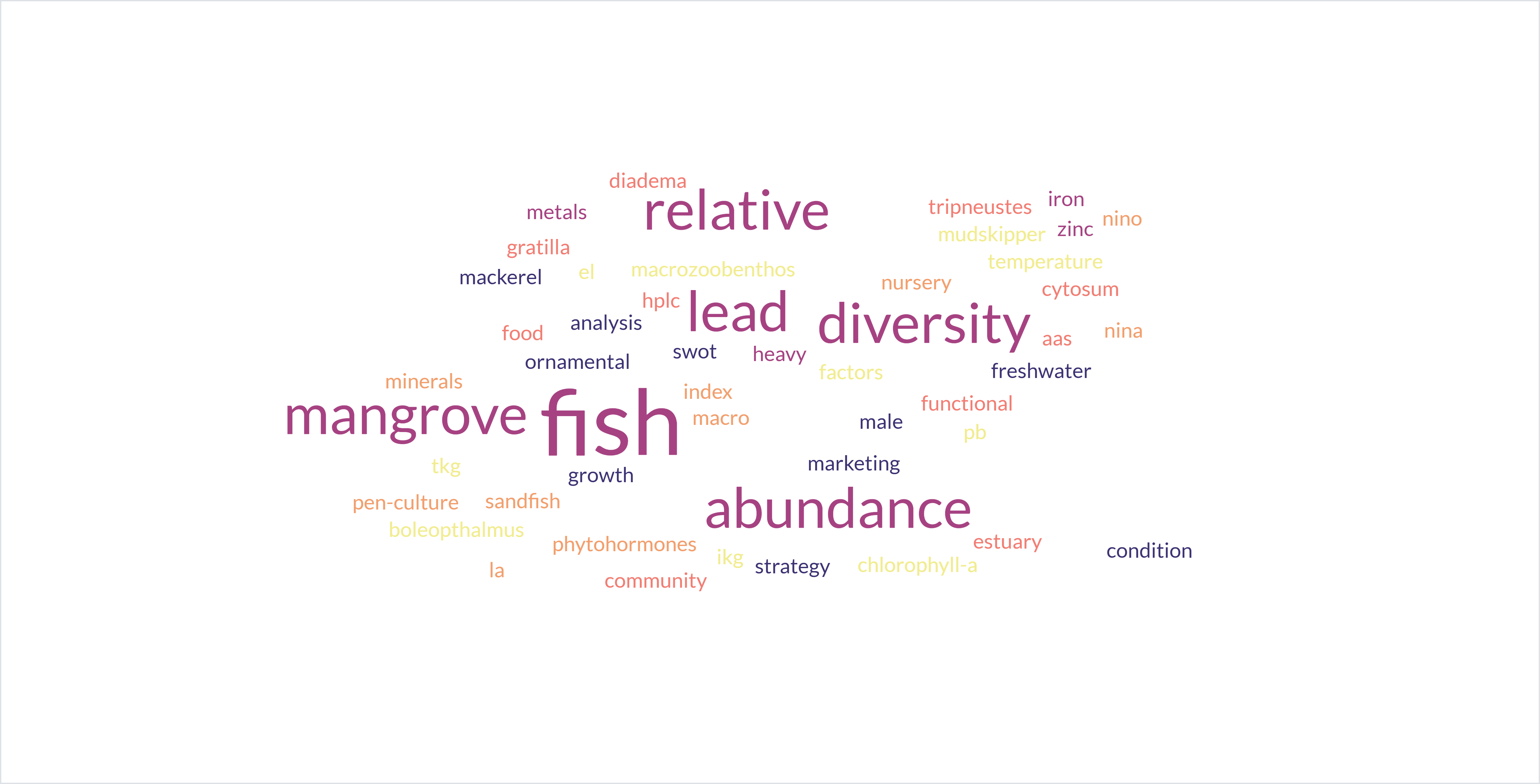Community of Phytoplankton as Aquatic Quality Bioindicator in Teluk Melanau Waters Lemukutan Island West Kalimantan
DOI:
https://doi.org/10.35800/jip.v11i2.49229Keywords:
Community structure;, phytoplankton;, bioindicator;, Lemukutan Island;Abstract
Lemukutan Island has the potential of natural resources with a high level of diversity, including phytoplankton. Lemukutan Island has been developed as a marine tourism destination and other activities. A way to monitor water conditions is by observing physical, chemical, and biological parameters. This study aimed to determine the community structure of phytoplankton as a water quality bioindicator and analyze the environmental parameters' correlation to the abundance of phytoplankton in Teluk Melanau, Lemukutan Island. Determination of sampling stations using a purposive sampling method. Phytoplankton identification, quantity, biological index, and measurement of environmental parameters were carried out in this study. The results showed that the phytoplankton community consisted of 77 genera and Bacillariophyceae has the highest percentage contribution (90.44%). The most common genera were Cocconeis, Nitzchia, Synedra, and Chaetoceros. The abundance of phytoplankton ranged from 2-1521 ind/L. The biological index showed that Teluk Melanau was in an unpolluted condition. Environmental parameters were still in the optimal range for the growth of phytoplankton. The abundance of phytoplankton is very strongly correlated with salinity, DO, nitrate, and phosphate, strongly correlated with pH and very weakly correlated with brightness, temperature, and current velocity.
Keywords: Community structure, phytoplankton, bioindicator, Lemukutan Island.
Abstrak
Perairan pulau Lemukutan memiliki potensi sumberdaya alam, termasuk fitoplankton. Pada saat ini, pulau Lemukutan telah dikembangkan sebagai destinasi wisata bahari dan berbagai aktivitas lainnya. Aktivitas tersebut dapat memberikan dampak terhadap kualitas perairan. Salah satu cara melakukan monitoring kondisi perairan yaitu dengan cara pengamatan parameter fisika, kimia, dan biologi. Penelitian ini bertujuan untuk mengetahui struktur komunitas fitoplankton sebagai bioindikator kualitas perairan dan menganalisis korelasi parameter lingkungan terhadap kelimpahan fitoplankton di Perairan Teluk Melanau, Pulau Lemukutan. Penentuan stasiun pengamatan dilakukan dengan menggunakan metode purposive sampling untuk mewakili rona lingkungan yang ada. Identifikasi fitoplankton, kelimpahan, indeks biologis, dan pengukuran parameter lingkungan dilakukan dalam penelitian ini. Hasil penelitian menunjukkan struktur komunitas fitoplankton terdiri dari 77 genera, dimana Bacillariophyceae merupakan komponen dengan persen kontribusi tertinggi (90,44%). Jenis yang paling banyak ditemukan yaitu Cocconeis, Nitzchia, Synedra, dan Chaetoceros. Kelimpahan fitoplankton berkisar antara 2-1521 ind/L. Indeks biologi menunjukkan bahwa perairan Teluk Melanau berada pada kondisi tidak tercemar. Parameter lingkungan masih dalam rentang optimal untuk pertumbuhan fitoplankton. Kelimpahan fitoplankton berkorelasi sangat kuat dengan salinitas, DO, nitrat, dan fosfat, berkorelasi kuat dengan pH dan berkorelasi sangat lemah dengan kecerahan, suhu, dan kecepatan arus.
Kata kunci: struktur komunitas, fitoplankton, bioindikator, pulau Lemukutan.
References
Abizar & Rahmah, S.W. (2020). Alga Hijau (Chlorophyceae) yang Ditemukan di Sungai Sumatera Barat. Bioconcetta: Jurnal Biologi dan Pendidikan Biologi, 6(1), 21-26.
Adenan, N.S., Yusoff, F. Md., & Shariff, M. (2013). Effect of salinity and temperature on the growth of diatoms and green algae. Journal of Fisheries and Aquatic Science, 8(2), 397-404.
Al-Harbi, S.M. & Affan, M.D.A. (2016). Seasonal Dynamics of Epiphytic Microalgae and Their Host Seaweeds Florideophyceae at Jeddah Coast, the Red Sea, Saudi Arabia, Pak. Journal Bot., 48(3), 1289-1298.
Al-Harbi, S.M. (2017). Epiphytic Microalgae Dynamics and Species Composition on Brown Seaweeds (Phaeophyceae) on the Northern Coast of Jeddah Saudi Arabia. Journal Oceanography and Marine Research, 5(1), 1-9.
Apriansyah, Safitri, I., Risko, Afdal, & Arsad, S. (2021). Microalgae Community as Aquatic Quality Bioindicator in Peniti Estuary West Kalimantan. Saintek Perikanan: Indonesian Journal of Fisheries Science and Technology, 17(1), 65-73.
Arifin, S.M., Izmiarti, & Chairul. (2015). Komunitas Fitoplankton di Sekitar Sungai Utama di Zona Litorial Danau Singkarak Provinsi Sumatera Barat. Journal of Natural Science, 4(3), 290-299.
Aquino, J., Flores, B., & Naguit, M. (2010). Harmful Algal Bloom Occurence in Murcielagos Bay Admidst Climate Change. J. E-International Scientific Research, 2(4), 358-365.
Arsad, S., Sari, L.A., Herawati, E.Y., Musa, M., Hertika, A.M.S., Putra, R.B.D.S., Sumayyah, I., Prayugo, M.A., & Siswanto, D.P. (2021). Distribusi Mikroalga di Perairan Indonesia. Malang: UB Press. 188 hlm.
Aryawati, R., Bengen, D.G., Prartono, T., & Zulkifli, H. (2017). Abundance of Phytoplankton in the Coastal Waters of South Sumatera. Ilmu Kelautan, 22(1), 31-39.
Aziz, R., Nirmala K., Affandi, R. & Prihadi, T. (2015). Kelimpahan Fitoplankton Penyebab Bau Lumpur pada Bludidaya Ikan Bandeng Menggunakan Pupuk N:P Berbeda. Jurnal Akuakultur Indonesia, 14(1), 58-68.
Badan Standardisasi Nasional. (2005). SNI 06.6989.31-2005. Air dan Air Limbah – Bagian 31: Cara Uji Kadar Fosfat dengan Spektrofotometer secara Asam Askorbat.
Badan Standardisasi Nasional. (2011). SNI 6989.79:2011. Air dan Air Limbah – Bagian 79: Cara Uji Nitrat (NO3-N) dengan Spektrofotometer UV-visibel secara Reduksi Kadmium.
Badan Standardisasi Nasional. (2015). SNI-6964.8: 2015. Kualitas Air Laut – Bagian 8: Metode Pengambilan Contoh Uji Air Laut. ICS 13.060.45.
Balqis, N., Rahimi, S.A.E., & Damora, A. (2021). Keanekaragaman dan Kelimpahan Fitoplankton di Perairan Ekosistem Mangrove Desa Rantau Panjang, Kecamatan Rantau Selamat, Kabupaten Aceh Timur. Jurnal Kelautan dan Perikanan Indonesia, 1(1), 35-43.
Barokah, G.R., Putri A.K. & Gunawan. (2016). Kelimpahan Fitoplankton Penyebab HAB (Harmful Algal Bloom) di Perairan Teluk Lampung pada Musim Barat dan Timur. JPB Kelautan dan Perikanan, 11(2), 115-126.
Barus, T.A. 2004. Pengantar Limnologi: Studi tentang Ekosistem Air Daratan. Universitas Sumatera Utara. Medan.
Begon, M., John, L.H., & Colin, D.G. (1986). Ecology. London: Blackwall Scientific Publication.
Bellinger, E.G. & Sigee, D.C. (2010). Freshwater Algae: Identification and Use as BioIndicators. Wiley- Blackwell, Chichester, UK, 271 pp.
Borowitzka, M.A., Lavery, P., & Keulen, M. (2006). Epiphytes of Seagrasses, in Seagrasses: Biology, Ecology, and Conservation. In: Larkum AWD, Orth RJ, Duarte CM (def.). Springer. Amsterdam. The Netherland.
Brahmana, P. (2014). Ekologi Laut. Universitas Terbuka. Tangerang. 412 hlm.
Clement-Larosière, B. (2012). Etude de la croissance de Chlorella vulgaris en photobioréacteur batch et continu, en présence de concentrations élevées de CO2. Autre. Ecole Centrale Paris. Français.
Conradie, K.R., Du Plessis, S. & Venter, A. (2008). School of Environmental Sciences and Development: Botany. South Africa. South African Journal of Botany, 74(2008), 101-110.
Dortch, Q., Milsted, D., Rabalals, N.N., Lohrenz, S.E., Redalje, D.G., Dagg, M.J., Turner, R.E., Whitledge, T.E. (1992). Role of silicate availabllty in phytoplankton species composition and the fate of carbon. Texas Sea Grant Tech Rep., 92-109, Galveston, p. 76-83
Edler, L. & Elbrachter, M. (2010). The Utermohl Method for Quantitative Phytoplankton Analysis. In: Karlson, B., C. Cusack and E. Bresnan (Eds.) Microscopic and Molecular Methods for Quantitative Analysis. Intergovernmental Oceanographic Commission, United Nations Educational, Scientific and Cultural Organization. Spain. pp. 13-15.
Effendi, H. (2003). Telaah Kualitas Air bagi Pengelolaan Sumberdaya dan Lingkungan Perairan. Kanisius. Yogyakarta. 259 hlm.
Effendi, H. (2016). Telaah Kualitas Air. Yogyakarta. Kanisius.
El-Din, N.S., Shaltout, N.A.N., Nassar, M.Z., & Soliman, A. (2015). Ecological Studies of Epiphytic Microalgae and Epiphytic Zooplankton on Seaweeds of the Eastern Harbor, Alexandria, Egypt. American Journal of Environmental Sciences, 11(6), 450-473.
Fatriyanti, D., Warsidah, Sofiana, M.S.J., & Helena, S. (2022). Analisis Kandungan Proksimat dan Mineral Zink dari Makroalga Eucheuma cottonii di Perairan Lemukutan. Oseanologia, 1(1), 28-32.
Ferial, E.W. & Salam, M.A. (2016). Fikologi. Jakarta: Erlangga.
Filali, R., Tian, H., Micheils, E., & Taidi, B. (2021). Evaluation of the Growth Performance of Microalgae Based on Fine pH Changes. Austin J. Biotechnol Bioeng, 8(1), 1109.
Gacia, E., Costalago, D., Prado, P., Piorno, D., & Tomas, F. (2009). Mesograzers in Posidonia oceanica meadows: an update of data on gastropod–epiphyte–seagrass interaction. Bot. Mar., 52, 439–447
Ganai, A.H. & Parveen, S. (2014). Effect of Physico-chemical Conditions on the Structure and Composition of the Phytoplankton Community in Wular Lake at Lankrishipora, Kashmir. International Journal of Biodiversity and Conservation, 6(1), 71-84.
García, N., López-Elías, J.A., Miranda, A., Martínez-Porchas, M., Huerta, N., & García, A. (2012). Effect of salinity on growth and chemical composition of the diatom Thalassiosira weissflogii at three culture phases. Lat. Am. J. Aquat. Res., 40(2), 435-440.
Gatamaneni, B.L., Orsat, V., & Lefsrud, M. (2018). Factors affecting growth of various microalgal species. Environ. Eng. Sci., 35, 1037–1048.
Gerloff-Elias, A., Spijkerman, E., & Pröschold, T. (2005). Effect of external pH on the growth, photosynthesis and photosynthetic electron transport of Chlamydomonas acidophila Negoro, isolated from an extremely acidic lake (pH 2.6). Plant, Cell and Environment, 28, 1218-1229.
Gholizadeh, M.H., Melesse, A.M., & Reddi, L. (2016). A comprehensive Review on water Quality Parameters Estimation Using Remote Sensing Techniques. Sensors, 16(8), 1298.
Gurning, L.F.P., Nuraini, R.A.T., & Suryono. (2020). Kelimpahan Fitoplankton Penyebab Harmful Algal Bloom di Perairan Desa Bedono Demak. J. Marine Research., 9(3), 251-260.
Gusmalawatia, D. & Sanova, A.S.S. (2018). Tutupan Lamun Thalassia hemprichii di Perairan Dusun Karang Utara, Pulau Lemukutan, Kabupaten Bengkayang, Kalimantan Barat. Journal of Fisheries and Marine Research, 2(3), 186-191.
Hamsher, S., Kopalová, K., KocioleK, J.P., Zidarova, R., & Vijver, B.V.D. (2016). The genus Nitzschia on the South Shetland Islands and James Ross Island. Fottea, Olomouc, 16(1), 79–102.
Hamuna, B., Tanjung, H.R.R., Suwito, Maury, H.K., & Alianto. (2018). Kajian Kualitas Air Laut dan Indeks Pencemaran Berdasarkan Parameter Fisika-Kimia di Perairan Distrik Depapre, Jayapura. Jurnal Ilmu Lingkungan, 16(1), 35-43.
Haninuna, E.D.N., Gimin, R., & Kaho, L.M.R. (2015). Pemanfaatan Fitoplankton sebagai Bioindikator Berbagai Jenis Polutan di Perairan Intertidal Kota Kupang. Jurnal Ilmu Lingkungan, 13(2), 72-85.
Heramza, K., Barour, C., Djabourabi, A., Khati, W., & Bouallag, C. (2021). Environmental parameters and diversity of diatoms in the Aïn Dalia dam, Northeast of Algeria. BIODIVERSITAS, 22(9), 3633-3644.
Herlina, N. Idiawati, & I. Safitri. (2018). Diversitas Mikroalga Epifit Berasosiasi pada Daun Lamun Thalassia hemprichii di Pulau Lemukutan Kalimantan Barat. Jurnal Laut Khatulistiwa, 1(2), 37-44
Hernández-Becerril, D.U., Lau, W.L.S., Hii, K.S., Leaw, C.P., Varona-Cordero, F., & Lim, P.T. (2018). Abundance and Distribution of the Potentially Toxic Thecate Dinoflagellate Alexandrium tamiyavanichii (Dinophyceae) in the Central Mexican Pacific, Using the Quantitative PCR Method. Front. Mar. Sci., 5, 366.
Hidayat, M., Warsidah, & Safitri I. (2021). Struktur Komunitas Mikroalga Epifit pada Padina dan Caulerpa di Perairan Pulau Kabung Kalimantan Barat. Jurnal Laut Khatulistiwa, 4(1), 29-39.
Hotos, G.N. & Avramidou, D. (2021). The Effect of Various Salinities and Light Intensities on the Growth Performance of Five Locally Isolated Microalgae Amphidinium carterae, Nephroselmis sp., Tetraselmis sp. (var. red pappas), Asteromonas gracilis and Dunaliella sp. in Laboratory Batch Cultures. J. Mar. Sci. Eng., 9, 1275.
Isti’anah, D., Huda, M.F., & Laily, A.N. (2015). Synedra sp. sebagai Mikroalga yang Ditemukan di Sungai Besuki Porong Sidoarjo, Jawa Timur. BIOEDUKASI, 8(1), 57-59.
Israwati, I.J. Effendy, & A.B. Patadjai. (2018). Komposisi Jenis dan Kepadatan Bentik Diatom pada Kolektor dan Kaki atau Otot Abalon (Haloitis asinina) yang Dipelihara di Kawasan Sistem IMTA (Integrated Multi Trophic Aqacuture) Out Door. Jurnal Media Akuatika, 3(1), 544-555.
Juneja, A., Ceballos, R.M., & Murthy, G.S. (2013). Effects of Environmental Factors and Nutrient Availability on the Biochemical Composition of Algae for Biofuels Production: A Review. Energies, 6, 4607-4638
Kazbar, A. Cogne, G., Urbain, B., Mareca, H., Le-Gouica, B., Talleca, J., Takache, H., Ismail, A., & Pruvost, J. (2019). Effect of dissolved oxygen concentration on microalgal culture in photobioreactors. Algal Research, 101.
Kazi, T.G., Arain, M.B., Jamali, M.K., Jalbani, N., Afridi, H.I., Sarfraz, R.A., Baig, J.A., & Shah, A.Q. (2009). Assessment of Water Quality of Polluted Lake Using Multivariate Statistical Techniques: A Case Study. Ecotox. Environ. Safe., 72(20), 301-309.
KelloGG, t.b. & K elloGG, d.e. (2002). Non–marine and littoral diatoms from Antarctic and Subantarctic regions. Distribution and updated taxonomy. Diatom Monogr. 1, 1–795.
Kep MENLH. 2004. Keputusan Kantor Menteri Negara Lingkungan Hidup No.Kep 51/MENLH/I/2004. Tentang Baku Mutu Air Laut. 11 hlm.
Keputusan Menteri Kelautan dan Perikanan Nomor 90/KEPMEN-KP/2020 tentang Kawasan Konservasi Pesisir dan Pulau-Pulau Kecil Pulau Randayan dan Perairan sekitarnya di Provinsi Kalimantan Barat.
Kersen, P., K. Jonne, B. Martynas, K. Natalja, & D. Zane. (2011). Epiphytes and Associated Fauna on the Brown alga Fucus vesiculosus in the Baltic and the North Seas in Relation to Different Abiotic and Biotic Variables. Marine. Ecology, 32(1), 87-95.
Kordi, M.G.H. & Tancung, A.B. (2010). Pengelolaan Kualitas Air dalam Budidaya Perairan. Rineka Cipta. Jakarta.
Krebs, C.J. (1985). Experimental Analysis of Distribution and Abundance. 3rd Ed. New York: Haper and Row Publisher.
Kumar, D.A., Gopal, T., Harinath, K., & Sibi, G. (2017). Responses in Growth and Lipid Productivity of Chlorella Vulgaris to Different Nitrogen Sources. SOJ. Microbiol. Infect. Dis., 5(2), 1-6.
Kumar, S.S. & Saramma, A.V. (2018). Effect of Salinity and pH Ranges on the Growth and Biochemical Composition of Marine Microalga- Nannochloropsis salina. JAEB, 11(4), 651-660.
Kusmana, C., Setyobudiandi, I., Hariyadi, S., & Sembiring, A. (2015). Sampling dan Analisis Bioekologi Sumber Daya Hayati Pesisir dan Laut. Bogor: IPB Press. 352 hlm.
Kusumaningtyas, M.A., Bramawanto, R. Daulat, A. & Pranowo, W.S. (2014). Kualitas Perairan Natuna pada Musim Transisi. Depik, 3(1), 10-20
Lestari, R.D.A., Apriansyah, & Safitri, I. (2020). Struktur Komunitas Mikroalga Epifit Berasosiasi Pada Padina sp. Di Perairan Desa Sepempang Kabupaten Natuna. Jurnal Laut Khatulistiwa, 3(2), 40-47
Li, K.Q., Li, M., He, Y.F., Gu, X.Y., Pang, K., Ma, Y.P., & Lu, D.L. (2020). Effects of pH and nitrogen form on Nitzschia closterium growth by linking dynamic with enzyme activity. Chemosphere, 249, 126154.
Lizotte, M.P. (2001). The contributions of Sea Ice Algae to Antarctic marine primary production. Amer Zool, 41, 57–73.
Ma’arif, M.C. (2018). Perbandingan Keanekaragaman dan Kelimpahan Plankton pada Ekosistem Terumbu Karang Alami dengan Terumbu Buatan di Perairan Pasir Putih Situbondo, Program Studi Ilmu Kelautan, Fakultas Sains dan Teknologi, Universitas Islam Negeri Sunan Ampel, Surabaya. [Skripsi].
Magdalena, W., Kushadiwijayanto, A.A., & Putra, Y.P. (2019). Struktur Komunitas Siput Laut (Kelas: Gastropoda) di Pesisir Dusun Karang Utara, Pulau Lemukutan. Jurnal Laut Khatulistiwa, 2(2), 72-78,
Majewska, R., Gambi, M.C., Totti, C.M., Pennesi, C., & De Stefano, M. (2012). Growth form analysis of epiphytic diatom communities of Terra Nova Bay (Ross Sea, Antarctica). Polar Biol.
Mason, C.F. (1981). Biology Freshwater Pollution. 2nd ed. Longman Scientific and Technical, New York.
McQuatters-Gollop, A. (2012). Challenges for implementing the Marine Strategy Framework Directive in a climate of macroecological change. Philos Trans R Soc Math Phys Eng Sci, 370, 5636–5655
Megawati, C., Yusuf, M., & Maslukah, L. (2014). Sebaran Kualitas Perairan Ditinjau dari Zat Hara, Oksigen Terlarut dan pH di Perairan Selatan Bali Bagian Selatan. Jurnal Oseanografi, 3(2), 142-150.
Militão, F.P., Fernandes, V.O., Bastos, K.V., Martins, A.P., Colepicolo, P., & Machado, L.P. (2019). Nutritional value changes in response to temperature, microalgae mono and mixed cultures. Acta Limnologica Brasiliensia, 31(17), 1-12
Millán-Oropeza, A., Torres-Bustillos, L.G., & Fernández-Linares, L. (2015). Simultaneous effect of nitrate (NO3-) concentration, carbon dioxide (CO2) supply and nitrogen limitation on biomass, lipids, carbohydrates and proteins accumulation in Nannochloropsis oculata. Biofuel Research Journal, 5, 215-221
Mishra, N., Prasad, S.M., & Mishra, N. (2019). Influence of High Light Intensity and Nitrate Deprivation on Growth and Biochemical Composition of the Marine Microalgae Isochrysis galbana. Brazilian Archives of Biology and Technology, 62, 19180398.
Mulyani, R. Widiarti, & Wardhana, W. (2012). Sebaran Spesies Penyebab Harmful Algal Bloom (HAB) di Lokasi Budidaya Kerang Hijau (Perna viridis) Kamal Muara Jakarta Utara pada Bulan Mei 2011. J. Akuatika, 3(1), 28-39.
Muñoz, I.L. & Bernard, O. (2021). Modeling the Influence of Temperature, Light Intensity and Oxygen Concentration on Microalgal Growth Rate. Processes, 9: 496.
Nasution, A., Widyorini, N., & Purwanti, F. (2019). Analisis Hubungan Kelimpahan Fitoplankton dengan Kandungan Nitrat dan Fosfat di Perairan Morosari, Demak. J. Maquares., 8(2), 78-86.
Nirmalasari, R. (2018). Analisis Kualitas Air Sungai Sebangau Pelabuhan Kereng Bengkiray Berdasarkan Keanekaragaman dan Komposisi Fitoplankton. J. Ilmu Alam dan Lingkungan, 9(17), 48-58.
Novasaraseta, N., Abidin, Z., & Junaedi, E. (2018). Keanekaragaman Phytoplankton di Situ Balong Kambang Desa Pasawahan Kecamatan Pasawahan Kabupaten Kuningan. J. Pendidikan dan Biologi, 10(1).
Nugroho, A. (2006). Bioindikator Kualitas Air. Universitas Trisakti. Jakarta.
Nurcahyanto, T., Muliadi, & Nurrahman, Y.A. (2021). Struktur Komunikasi Terumbu Karang di Perairan Teluk Melanau Timur, Pulau Lemukutan. Jurnal Laut Khatulistiwa, 4(2), 22-28.
Odum, E.P. (1993). Dasar-Dasar Ekologi. Gajah Mada Univ Press. Yogyakarta.
Omura, T., Iwataki, M., Borja, V.M., Takayama, H., & Fukuyo, Y. (2012). Marine Phytoplankton of the Western Pacific. Kouseisha Kouseikaku Co. Ltd. Japan. 160 hlm.
Patty, S.I., Rizki, M.P., Rifai, H., & Akbar, N. (2019). Kajian Kualitas Air dan Indeks Pencemaran Perairan Laut di Teluk Manado Ditinjau dari Parameter Fisika-Kimia Air Laut. J. Ilmu Kelautan Kepulauan, 2(2), 1-13.
Pello, F.S., Adiwilaga, E.M., Huliselan, N.V., & Damar, A. (2014). Pengaruh Musim Terhadap Beban Masukan Nutrien di Teluk Ambon Dalam. Jurnal Bumi Lestari, 14(1), 63-73.
Pranata, N.B., Muliadi, & Sanova, A.S.S. (2018). Kondisi Ekosistem Terumbu Karang di Teluk Cina, Pulau Lemukutan, Kalimantan Barat. Jurnal Laut Khatulistiwa, 1(2), 9-16.
Pratama, P.S., Wiyanto, D.B., Faiqoh, E. (2017). Struktur komunitas perifiton pada lamun jenis Thalassia hemprichii dan Cymodocea rotundatta di Kawasan Pantai Sanur. J. Mar. Aquat. Sci., 3(1), 123-133.
Purnawan, S., Dewiyanti, I., & Marman, T.M. (2016). Bioekologi Fitoplankton di Laguna Gampong Pulot (LGP) Kabupaten Aceh Besar. Omni Akuatika, 12(2), 104-112.
Putrianti, D.P., Setyawati, T.R., Yanti, A.H. (2015). Keragaman limno fitoplankton di danau Lait Kecamatan Tayan Hilir Kabupaten Sanggau. Protobiont, 4(2), 18-29.
Rangkuti, A.M., Muhammad, R.C., Ani, R., Yulma, & Hasan, E.A. (2017). Ekosistem Pesisir dan Laut Indonesia. Bumi Aksara. Jakarta.
Rangpan, V. (2008). Effects of Water Quality on Periphyton in The Pattani River, Yala Municipality, Thailand. Thesis Submitted in Fulfillment of The Requirements for The Degree of Doctor of Philosophy, Universitas Sains Malaysia. Malaysia.
Ras, M., Steyer, J-P., & Bernard, O. (2013). Temperature effect on microalgae: a crucial factor for outdoor production. Reviews in Environmental Science and Bio/Technology, 12(2), 153-164.
Rudianto, A., Dewi, Y.S.K., & Burhanuddin. (2020). Ecotourism Development of Snorkeling and Diving Activity Toward Coral Reef Habitats in the Lemukutan Island of Bengkayang Regency. AQUASAINS: Jurnal Ilmu Perikanan dan Sumberdaya Perairan, 8(2), 795-808.
Ruhland, K., Paterson, A.M, & Smol, J.P. (2008). Hemispheric‐scale patterns of climate‐related shifts in planktonic diatoms from North American and European lakes. Glob. Chang. Biol., 14(11), 2740-2754.
Safarov, I.V., Abdullaev, A.K., Khujamshukurov, N.A., & Shakirov, Z.S. (2015). Influence of Temperature and CO2 on the Growth and Accumulation Oil of Microalgae. British Journal of Applied Science & Technology, 10(3), 1-9.
Safdar, W., Shamoon, M., Zan, X., Haider, J., Sharif, H.R., Shoaib, M., & Song, Y. (2017). Growth kinetics, fatty acid composition and metabolic activity changes of Crypthecodinium cohnii under different nitrogen source and concentration. AMB Express., 7(1), 85.
Saragih, G.M. & Erizka, W. (2018). Keanekaragaman Fitoplankton sebagai Indikator Kualitas Air Danau Sipin di Kota Jambi. J. Daur Lingkungan, 1(1), 22-28.
Sas, A.A., Turki, A.J., Affan, A., Al-Taisan, W.A., Das, S.K., Su, S.N., & Cob, Z.C. (2021). The influence of temperature and nutrient concentrations on growth rate, biomass, Chlorophyll-a, and biochemical compositions of Tetraselmis suecica (Chlorophyta). IOP Conf. Series: Earth and Environmental Science, 880, 012014
Schaduw, J.N.W. & Ngangi, E. (2015). Karakterisasi Lingkungan Perairan Teluk Talengen Kabupaten Kepulauan Sangihe sebagai Kawasan Budidaya Rumput Laut Kappaphycus Alvarezii. J. Budidaya Perairan, 3(2), 29-44.
Serra-Maia, R., Bernard, O., Goncalves, A., Bensalem, S., & Lopes, F. (2016). Influence of temperature on Chlorella vulgaris growth and toxicity rates in a photobioreactor. Algal Res., 18, 352–359
Shabrina, F.N., Saptarini, D., & Setiawan, E. (2020). Struktur Komunitas Plankton di Pesisir Utara Kabupaten Tuban. J. Sains dan Seni Its., 9(2).
Simanjuntak, M. (2009). Hubungan Faktor Lingkungan Kimia, Fisika terhadap Distribusi Plankton di Perairan Belitung Timur, Bangka Belitung. Journal of Fisheries Sciences, 11(1), 31-45.
Siregar, L.L., Hutabarat, S., & Muskananfola, M.R. (2014). Distribusi Fitoplankton Berdasarkan Waktu dan Kedalaman yang Berbeda di Perairan Pulau Menjangan Kecil Karimunjawa. J. of Maquares., 3(4), 9-14.
Sofiana, M.S.J., Nurrahman, Y.A., Warsidah, Minsas, S., Yuliono, A., Safitri, I., Helena, S., & Risko. (2022). Community Structure of Macroalgae in Lemukutan Island Waters, West Kalimantan. Jurnal Ilmu Kelautan SPERMONDE, 8(1), 1-8
Suardiani, N.K., Arthana, I.W., & Kartika, G.R.A. (2018). Produktivitas Primer Fitoplankton pada Daerah Penangkapan Ikan di Taman Wisata Alam Danau Buyan, Buleleng, Bali. J. Curr.Trends Aq. Sc., 1(1), 8-15.
Suryono, T & Sudarso, J. (2019). Hubungan Komposisi dan Kelimpahan Perifiton dengan Kualitas Air di Sungai dan Danau Oxbow di Palangka Raya pada Kondisi Air Dangkal. LIMNOTEK, 26(1), 23-38.
Suyono, E.A., Haryadi, W., Zusron, M., Nuhamunada, M., Rahayu, S., & Nugroho, A.P. (2015). The Effect of Salinity on Growth, Dry Weight and Lipid Content of the Mixed Microalgae Culture Isolated from Glagah as Biodiesel Substrate. Journal of Life Sciences, 9, 229-233.
Tarigas, M.T., Apriansyah, & Safitri, I. (2020). Struktur Komunitas Mikroalga Epifit Berasosiasi Pada Sargassum sp. Di Perairan Desa Sepempang Kabupaten Natuna. Jurnal Laut Khatulistiwa, 3(2), 61-68.
Tungka, A.W., Haeruddin, & Ain, C. (2016). Konsentrasi Nitrat dan Ortofosfat di Muara Sungai Banjir Kanal Barat dan Kaitannya dengan Kelimpahan Fitoplankton Harmful Alga Blooms (HABs). J. Fisheries Science and Technology, 12(1), 40-46.
Turner, R.E. & Rabalais, N.N. (1991). Changes in Mississippi River water quality this century. BioSci., 41, 140
Vassilev, S.V., Vassileva, C.G. (2016). Composition, properties and challenges of algae biomass for biofuel application: An overview. Fuel, 181, 1–33.
Vonshak, A., & Torzillo, G. (2004). Environmental Stress Physiology. In Handbook of Microalgal Culture: Biotechnology and Applied Phycology; Richmond, A., Ed.; Blackwell Science Ltd.: Hoboken, NJ, USA. pp. 73–7.
Warhate, S.R., Yenkie, M.K.N., Chaudhari, M.D., & Pokale, W.K. (2006). Impacts of Mining Activities on Water and Soil. J. Environ. Sci. Eng., 48(2), 81-88.
Wetzel, C.E., Beauger, A., & Ector, L. (2019). Cocconeis rouxii Héribaud & Brun a forgotten, but common benthic diatom species from the Massif Central, France. BOTANY LETTERS, 1-13.
Widigdo, B. & Wardiatno, Y. (2013). Dinamika Komunitas Fitoplankton dan Kualitas Perairan di Lingkungan Perairan Tambak Udang Intensif: Sebuah Analisis Korelasi. Jurnal Biologi Tropis, 13(2).
Wijaya, N.I., Sari, A.K.A., & Mahmiah (2022). Pengaruh Konsentrasi Fosfat dan Nitrat terhadap Kelimpahan Fitoplankton di Perairan Mangrove Gunung Anyar, Surabaya. J. Pertanian Terpadu, 10(1), 64-77.
Wind, T. (2007). The Role of Detergents in the Phosphate-Balance of European Surface Waters; European Water Management. Online: Hennef, Germany, 2007; pp. 1–19
Witkowski, A., Lange-Bertalot, H., & Metzeltin, D. (2000). Diatom Flora of Marine Coasts I. Koeltz Scientific Books. Germany.
Xin, L., Hong-ying, H., Ke, G., & Ying-xue, S. (2010). fects of different nitrogen and phosphorus concentrations on the growth, nutrient uptake, and lipid accumulation of a freshwater microalga Scenedesmus sp. Bioresour. Technol., 101, 5494–5500.
Yaakob, M.A., Mohamed, R.M.S.R., Al-Gheethi, A., Ravishankar, G.A., & Ambati, R.R. (2021). Influence of Nitrogen and Phosphorus on Microalgal Growth, Biomass, Lipid, and Fatty Acid Production: An Overview. Cells: 10, 393.
Yamaji. (1984). Illustration of the Marine Plankton of Japan. Hoikusho, Osaka, Japan. 369p.
Yu, H., Kim, J., Rhee, C., Shin, J., Shin, S.G., & Lee, C. (2022). Effects of Different pH Control Strategies on Microalgae Cultivation and Nutrient Removal from Anaerobic Digestion Effluent. Microorganisms, 10, 357.
Yuliana. (2014). Keterkaitan antara Kelimpahan Zooplankton dengan Fitoplankton dan Parameter Fisika - Kimia di Perairan Jailolo, Halmahera Barat. J. Maspari, 6(1), 25-31.
Yuliana. (2015). Distribusi dan Struktur Komunitas Fitoplankton di Perairan Jailolo, Halmahera Barat. J. Akuatika, 6(1), 41‐48.
Downloads
Published
How to Cite
Issue
Section
License
Copyright (c) 2023 Zainal Zainal, Arie Antasari Kushadiwijayanto, Ikha Safitri, Mega Sari Juane Sofiana

This work is licensed under a Creative Commons Attribution-NonCommercial 4.0 International License.
COPYRIGHT
Authors who publish with this journal agree to the following terms:
Authors hold their copyright and grant this journal the privilege of first publication, with the work simultaneously licensed under a Creative Commons Attribution License that permits others to impart the work with an acknowledgment of the work's origin and initial publication by this journal.
Authors can enter into separate or additional contractual arrangements for the non-exclusive distribution of the journal's published version of the work (for example, post it to an institutional repository or publish it in a book), with an acknowledgment of its underlying publication in this journal.
Authors are permitted and encouraged to post their work online (for example, in institutional repositories or on their website) as it can lead to productive exchanges, as well as earlier and greater citation of the published work (See The Effect of Open Access).




















